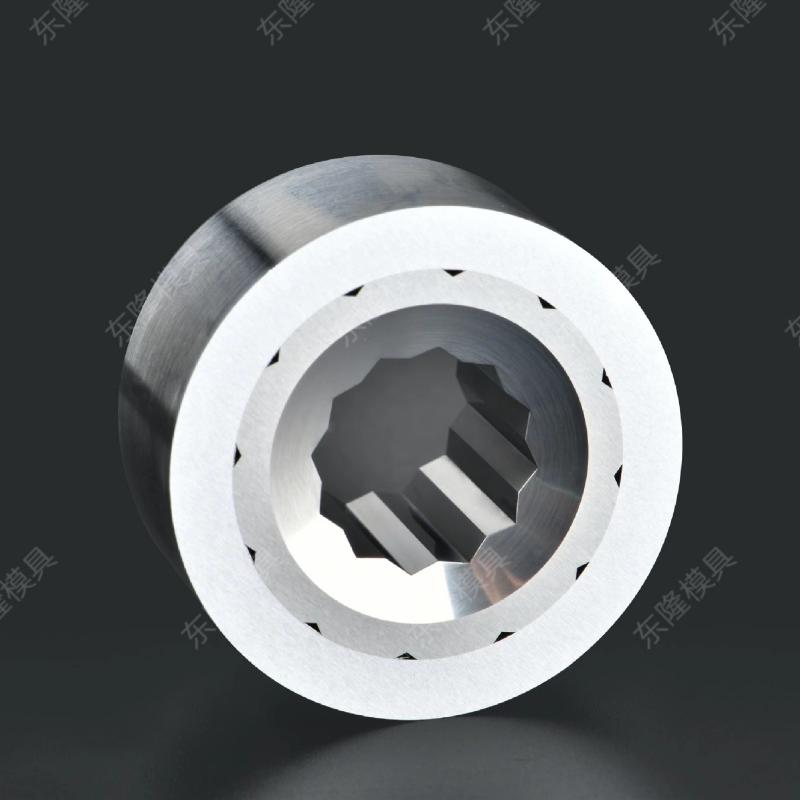Hot Heading Dies: Characteristics, Applications, and Maintenance
What Are Hot Heading Dies?
Hot Heading Dies are specialized tooling components used in metal forming processes, particularly in hot forging and heading operations. These dies are designed to shape heated metal blanks into precise geometries under extreme pressure and temperature conditions. Constructed from high-performance tool steels like H13 (DIN 1.2344) or D2 (DIN 1.2379), hot heading dies typically operate at temperatures ranging from 800°C to 1200°C and withstand pressures up to 2500 MPa. The dies feature hardened surfaces with core toughness, often achieving HRC 52-58 hardness through advanced heat treatment processes.
Key Characteristics:
Thermal Resistance: Maintain structural integrity at continuous operating temperatures up to 650°C with specialized coatings like AlCrN or TiAlN
Wear Resistance: Surface treatments provide 3-5x longer service life compared to untreated dies
Impact Toughness: Charpy V-notch impact values typically exceed 20 J/cm² at room temperature
Dimensional Stability: Thermal expansion coefficients as low as 12×10⁻⁶/°C ensure precision forming
Fatigue Resistance: Designed for 100,000+ cycles in high-production environments

Applications of Hot Heading Dies
Hot heading dies serve critical functions across multiple industrial sectors where high-temperature metal forming is required:
Automotive Components
In automotive manufacturing, hot heading dies produce high-strength fasteners like M12-M24 bolts and wheel studs. The process achieves 80-90% material utilization efficiency while meeting ISO 898-1 Class 10.9 and 12.9 strength requirements. Typical production rates reach 60-120 parts per minute on modern headers.
Aerospace Fasteners
For aerospace applications, hot heading dies form titanium and nickel alloy fasteners requiring 1600-2200 MPa tensile strength. The dies maintain dimensional tolerances within ±0.05 mm for critical aircraft components like engine mount bolts and structural rivets.
Oil & Gas Equipment
In the energy sector, hot heading dies manufacture large-diameter (up to 50 mm) drill string components and wellhead equipment. The process delivers 30-40% higher yield strength compared to machining for components like API Spec 7-1 threaded connections.
Industrial Machinery
Heavy equipment manufacturers use hot heading dies to produce Grade 8 and higher fasteners for crawler tracks, crane assemblies, and mining equipment. The hot forming process improves grain flow characteristics by 15-20% compared to Cold Heading alternatives.
Maintenance Procedures for Hot Heading Dies
Proper maintenance extends die life and maintains product quality. Follow these best practices:
Daily Maintenance
Inspect die surfaces for cracks using 10x magnification and dye penetrant testing
Measure critical dimensions with 0.001 mm resolution micrometers
Apply high-temperature lubricants (graphite-based or molybdenum disulfide) every 4-8 hours of operation
Monitor die temperature with infrared pyrometers, maintaining ±15°C of optimal range
Periodic Maintenance
Perform EDM reconditioning after 50,000-100,000 cycles to restore profiles
Apply PVD coatings every 200,000 cycles to maintain wear resistance
Stress relieve dies at 500-550°C for 2 hours after 250,000 cycles
Check hardness at 3-5 points using Rockwell C scale testing
Storage Procedures
Store dies in dehumidified environments at <40% RH
Apply VCI (Vapor Corrosion Inhibitor) coatings for long-term storage
Maintain 15-25°C ambient temperature to prevent thermal stress
Use customized racks to prevent contact between multiple dies
Critical Maintenance Data:
Optimal die clearance: 0.1-0.3% of workpiece diameter
Maximum allowable wear: 0.2 mm on critical surfaces
Cooling rate after use: ≤100°C/hour to prevent cracking
Surface roughness maintenance: Ra ≤ 0.4 μm on forming surfaces











